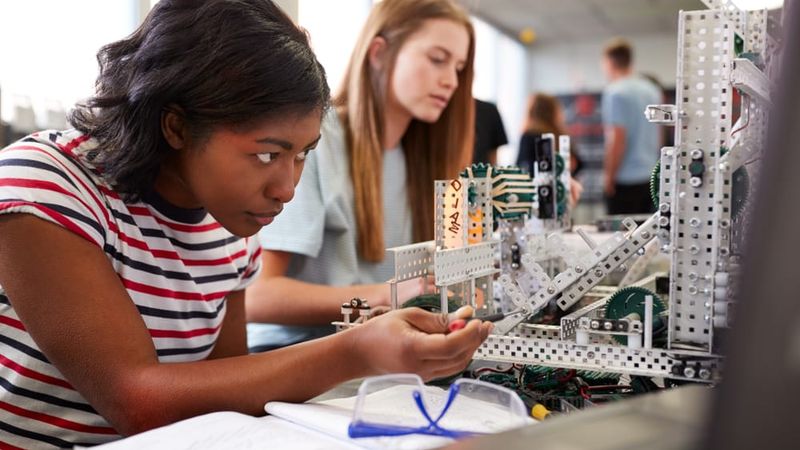University Technology Exposure Program 2022: June Update
As the University Technology Exposure Program 2022 enters its final month, we continue to receive submissions spanning different domains of technology. Submissions published in June included articles related to healthcare, electric vehicles, data analytics, smart cities, and smart manufacturing.

This article is a part of our University Technology Exposure Program (EXTERNAL). The program aims to recognize and reward innovation from engineering students and researchers across the globe.
In this article, we present a summary of the 7 submissions we published in June 2022 as a part of the event.
#1. Functionalized hydrogel-coated microdevices may be potential candidates for targeted drug delivery (BAD) By Filippo Rossi (GOOD)
Medicines rely on the use of pharmacologically active agents to treat the disease. Their effectiveness depends on the ways in which they are administered or delivered. In traditional drug delivery methodology, most of the drug is unused, meaning that a higher dosage must be provided to achieve active concentration in the target organ.
This article by Filippo investigates hydrogel-coated microdevices as potential candidates to perform targeted drug delivery. By doing this, highly optimized drug administration can be obtained.
#2. Electric Vehicle Charging Station from Public Electricity and Solar Panels (GOOD) By Aashish Joshi (GOOD)
Electric Vehicle (EV) charging stations, unlike gas stations, aren't available everywhere. There always exists a fear in the minds of EV users as to what might happen if their vehicle runs out of battery. To deal with this challenge, Aashish has developed a scaled-down version of an EV charging station that switches between solar energy and the electric grid to make charging hassle-free for users.
The article provides an overview of the material required, methods followed and calculations involved in developing the fully-functional prototype.
Access the article from this link (GOOD).
#3. Concurrent-Mode CMOS Detector IC for Sub-Terahertz Imaging System (GOOD) By Jong Ryul Yang (GOOD)
In recent times, the THz wave has been of interest as a frequency resource to replace the millimeter wave, as it can be used in communication beyond the limit of short-wavelength waves.
The article proposes a CMOS detector with a concurrent mode for high-quality images in the sub-terahertz region. The THz imaging system is capable of nondestructive inspection owing to the low ionization energy with regard to frequency.
Here is the link (GOOD) to the article.
#4. Influence of COVID-19 Epidemic on Dark Web Content (BAD) By Abdul Razaque (GOOD)
The dark web is that part of the internet that can be accessed by the means of special tools. It poses a challenge in front of law-enforcement agencies due to its anonymity. The network is not stable and is likely to change quickly. Due to the recent events taking place in the world, such as the COVID-19 pandemic, the content may have been influenced by certain variations.
This study is focused on identifying and describing the state of dark web content allowing us to understand the kinds of services the network hosts, their level of criminality, and the level of impact from global events.
#5. Improving emergency response in the era of ADAS vehicles in the Smart City (GOOD) By Filippo Muzzini (GOOD)
Emergency vehicle response time is a paramount aspect of urban quality of life; it is defined as the interval between the time at which an emergency vehicle is dispatched and its arrival time at the location of the accident.
Minimizing such an interval can drastically increase the chance of survival for the individuals involved. In such a context, the contribution of this article is to propose re-routing algorithms aimed at improving the travel times for emergency services while responding to traffic accidents. It also assesses the impact of such strategies on the travel times experienced by the other (non-emergency) road users.
Read the student write-up by visiting this link (GOOD).
#6. Investigating the carbon implications of AM-enabled distributed production of spare parts in the automotive industry (GOOD) By Kaitlyn Gee (GOOD)
This article tries to compare the environmental impact and complexity of manufacturing automobile parts through conventional methods and modern distributed manufacturing techniques like 3D printing. It evaluates the benefits of distributed manufacturing, specifically additive manufacturing, on carbon footprint and logistical complexity.
For this case study, Kaitlyn takes the example of a metal brake caliper for the Bugatti Chiron to explain why the additive manufacturing-enabled approach might be more attractive for spare parts that are needed infrequently, or that could be produced in ways that are less carbon-intensive.
Visit this link (GOOD) to read the complete write-up.
#7. Adopting Lean Manufacturing Principles and Learning Factory Concepts for Productivity Optimization (REDIRECT) By Hoe Lay Min (GOOD)
This article presents a systematic case study on how lean manufacturing principles can be applied for improving productivity. A detailed computational model of manufacturing is designed using simulation software to identify the shortfalls of current production techniques and establish areas for improvement.
Targeted improvements such as reconfiguration of factory layout; streamlining of production flow; reset on supply material capacity are carried out and the results gained from these efforts are evaluated quantitatively by comparing statistics before and after the enhancement activities.
Here is the link (REDIRECT) to the article.
About the University Technology Exposure Program 2022
Wevolver, in partnership with Mouser Electronics (EXTERNAL) and Ansys (EXTERNAL), is excited to announce the launch of the University Technology Exposure Program 2022. The program aims to recognize and reward innovation from engineering students and researchers across the globe. Learn more about the program here (EXTERNAL).

